Amazon’s Prime Big Deal Days event is an excellent opportunity to grab some upgraded components for your PC. A lot of components can see prices take a tumble, with some dropping to the lowest prices yet. Given that the graphics card is often the single most expensive part of your PC build, it is worth taking advantage of any chance to shave off a few pounds, euros or dollars.
We’ve done a quick round-up of some excellent deals on graphics cards so you can find the price and spec that fits your requirements.
Sapphire Pulse AMD Radeon RX 9070 XT
The AMD Radeon RX 9070 XT is a graphics card highly recommended by the Club386 team. It is one of the best mid-range cards currently on the market, and has proven its worth in terms of value and performance. With this latest price cut bringing it down to $679.99 in the US or £557.99 here in the UK, it becomes even more attractive as an upgrade option.

Sapphire Pulse AMD Radeon RX 9070 XT
“There’s a new midrange marvel in town and its name is Radeon RX 9070 XT.” – Read our review
Though our review was for a slightly different version of the Radeon RX 9070 XT, the performance figures tend to remain largely the same across various models. Those intending to take advantage of the sale will need to ensure they have a suitable power supply, as the RX 9070 XT can be thirsty, topping out with a TBP of 330W. Despite the power demands, it keeps its cool, not rising much above 60°C when under load.
Though the RX 9070 XT is undoubtedly a gaming card, it can handle a huge range of productivity and creative tasks with no problem. For example, in Geekbench AI the RX 9070 XT pulled off a score of 49,452, beating out everything except the Nvidia RTX 5080 and RTX 5070 Ti, both more expensive GPUs.
AMD has boasted about the capabilities of the RX 9070 XT, touting it as a 4K gaming card. When this was put to the test in Assassin’s Creed: Mirage, the card pulled off an average of 103fps at 4K UHD resolution. Similarly, Mount & Blade II: Bannerlord was no problem, as the card managed an average of 136fps at 4K, and a very impressive 262fps at 1440p.
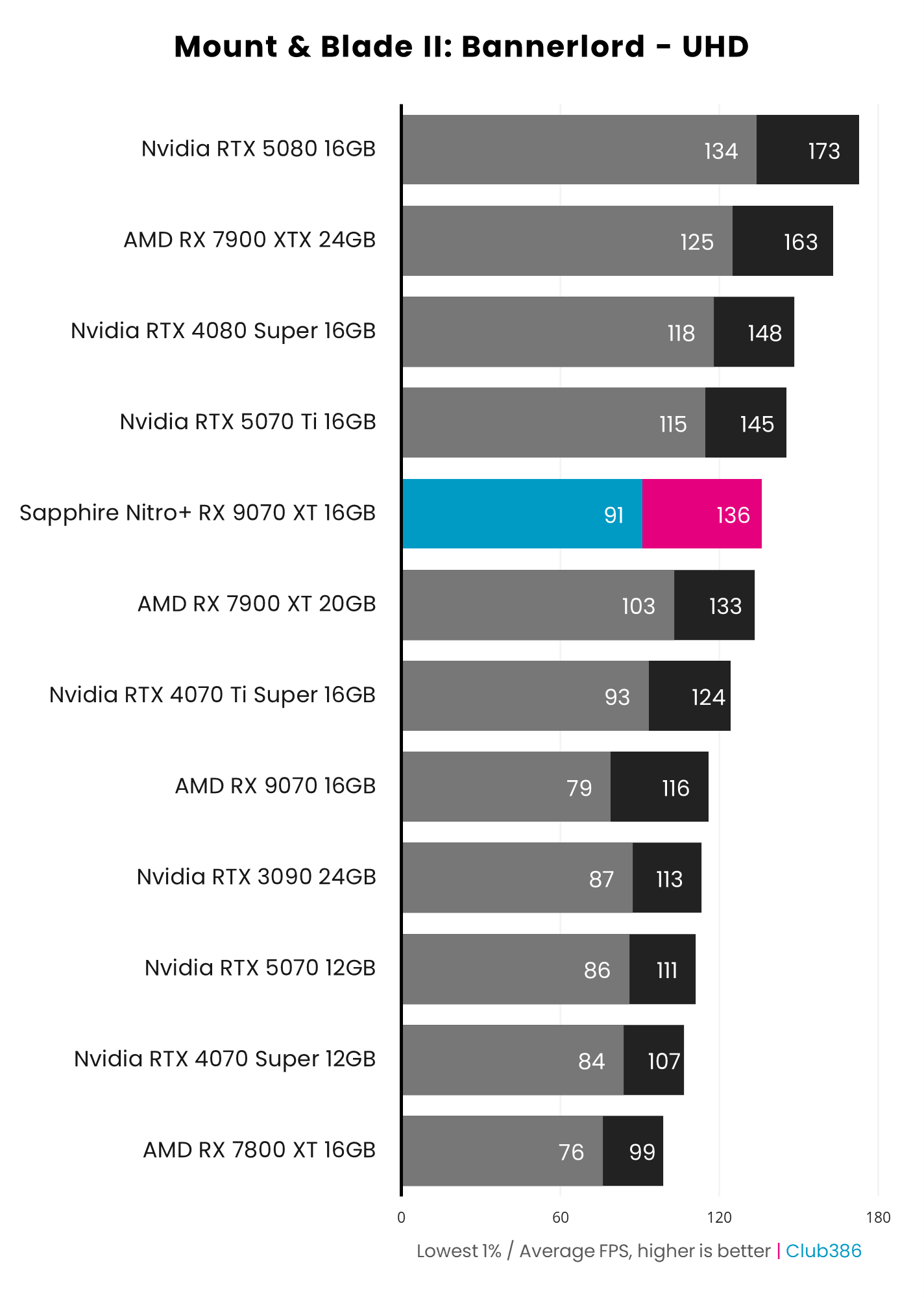
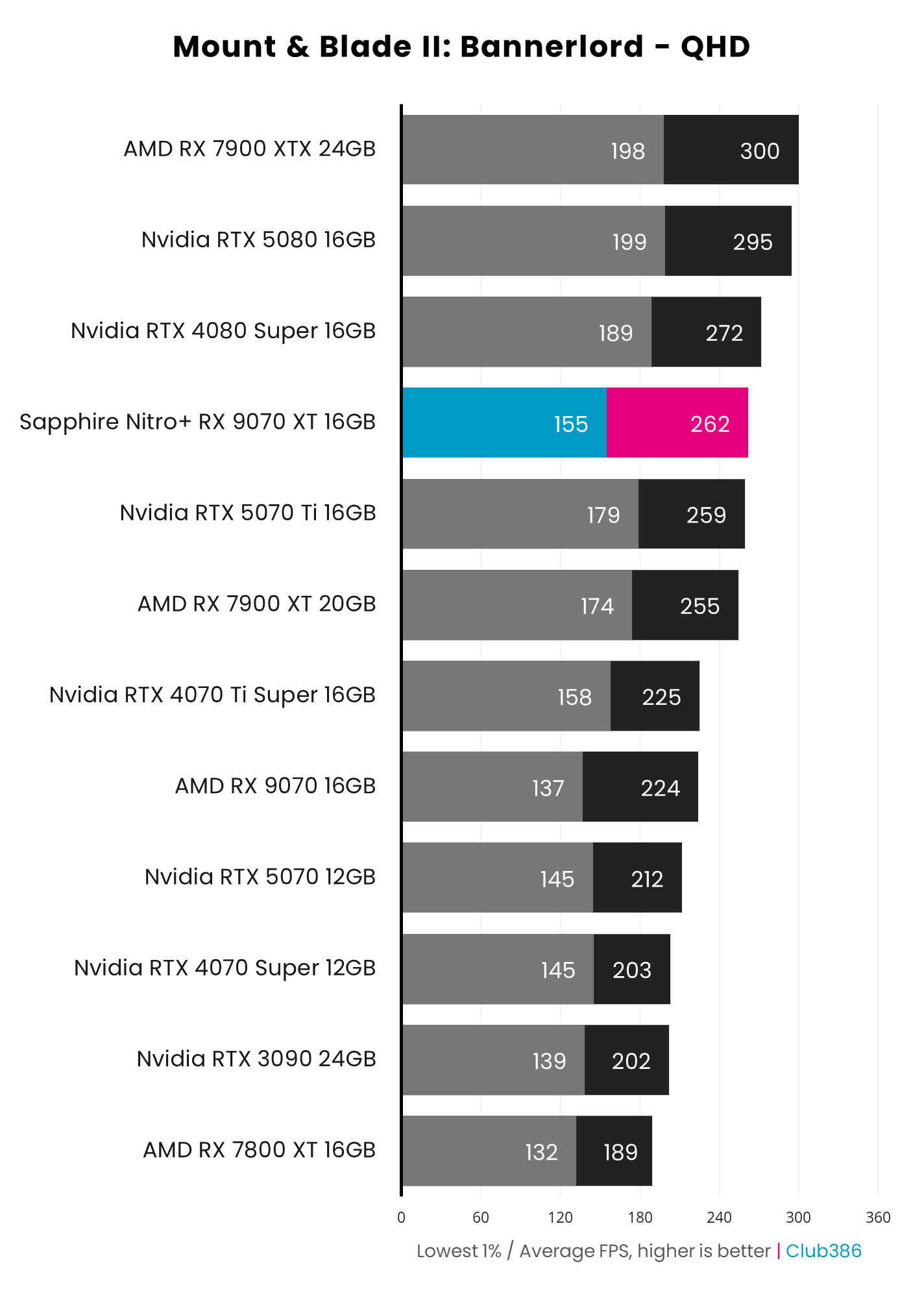
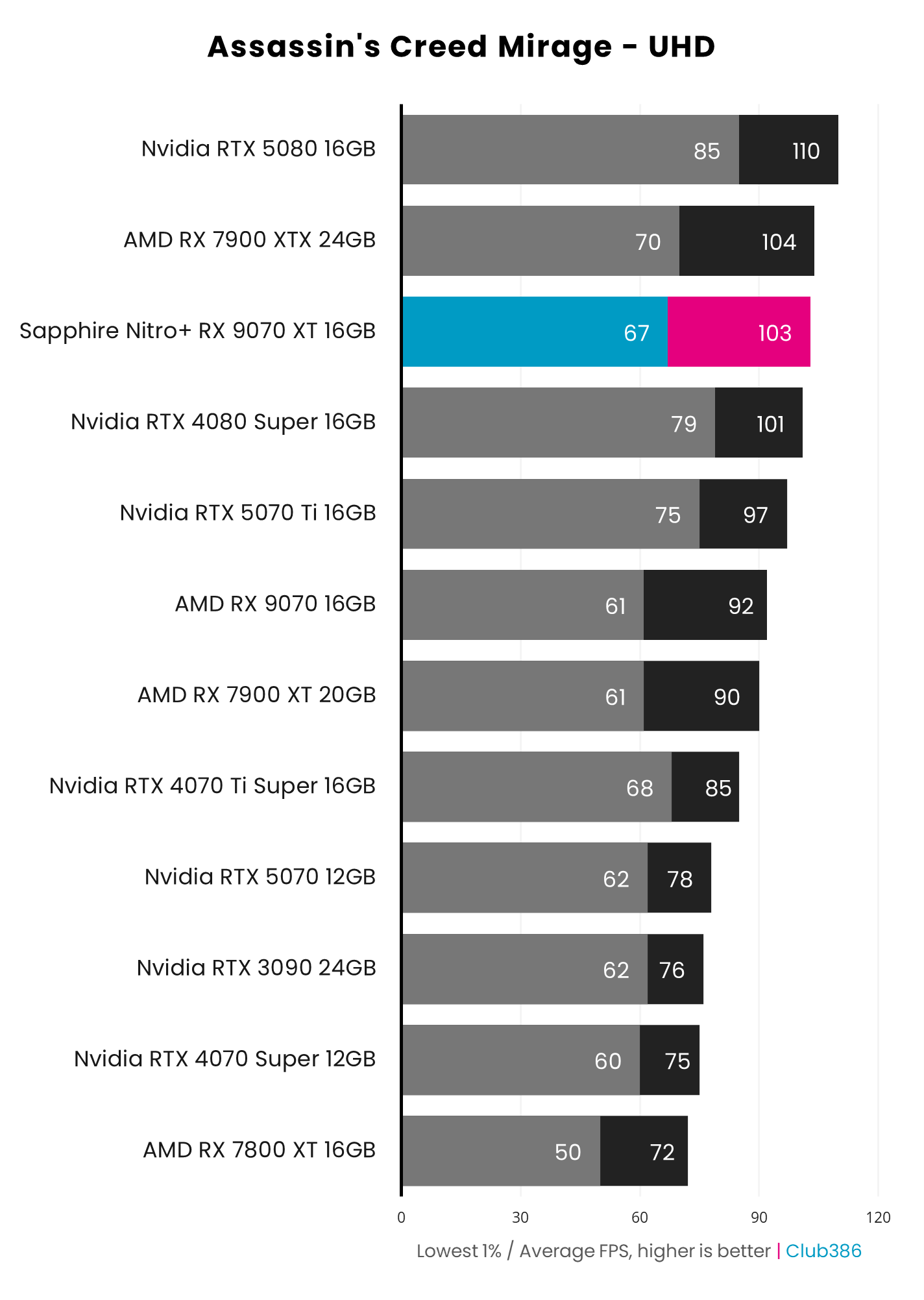
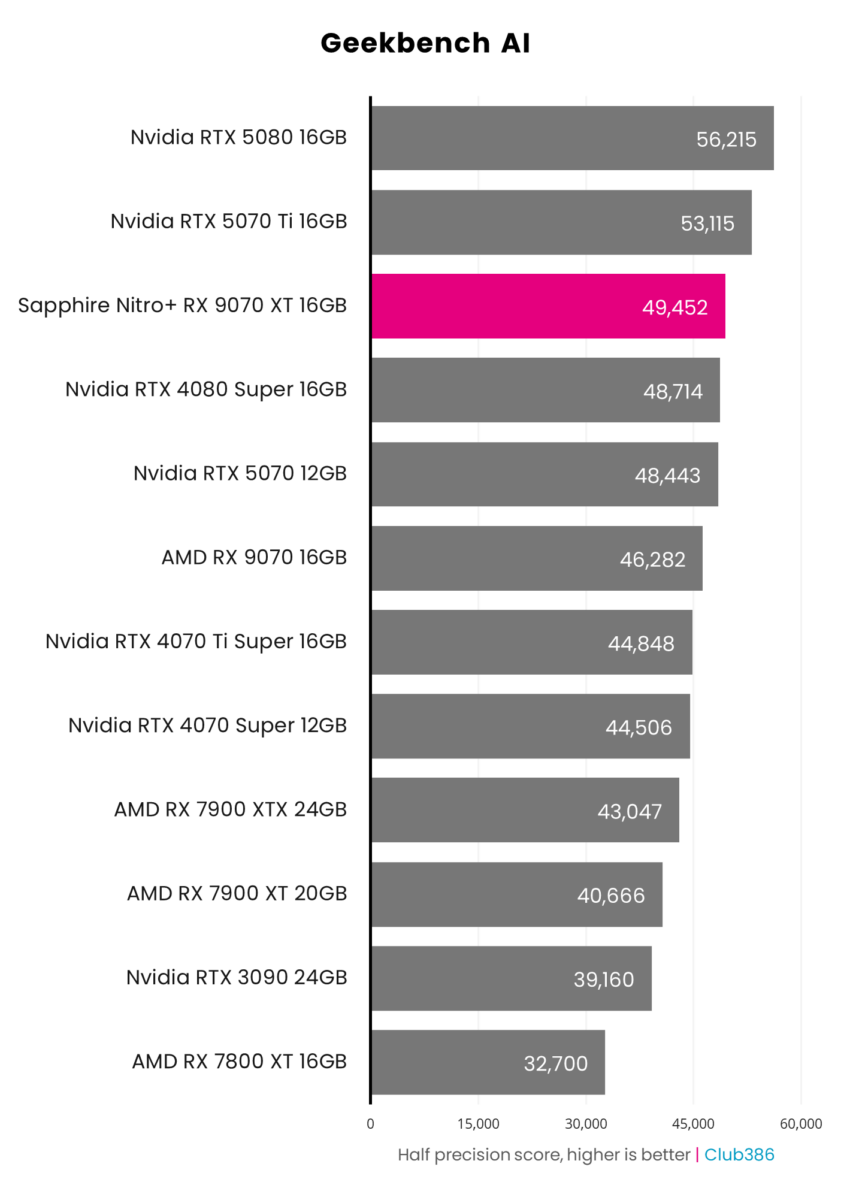
Since the RX 9070 XT can trade blows with some far more powerful and expensive graphics cards, that makes it a fine choice for high-end gaming without breaking the bank, especially with a discount. The 16GB VRAM gives it an additional advantage over cards like the RTX 5070 8GB, as many modern games need that extra frame buffer to run smoothly.
One potential caveat is that AMD Radeon’s suite of FSR 4 tools is not quite as advanced as Nvidia’s DLSS. Both of these technologies provide advanced machine learning tools for functions such as frame generation and AI upscaling. Nvidia’s software tends to beat out FSR, since it has features such as multi-frame generation. However, the software and drivers are being regularly updated with new enhancements. Plus, AMD drivers have acquired a reputation for ageing like fine wine, which bodes well for long-term use.
The Sapphire Pulse AMD Radeon RX 9070 XT is an excellent card standing at the top of the mid-range, and well worth spending money on, especially with seven percent off the list price.
Asus GeForce RTX 5070 Ti OC SFF-ready
Despite boasting those three big fans, the Asus GeForce RTX 5070 Ti is listed as ‘SFF-Ready’. This means that it is a 2.5-slot form factor suitable for confined builds, such as those contained in a Fractal Design Mood. The Asus RTX 5070 Ti doesn’t have the same design flair as something like the Palit GeForce RTX 5070 Ti GameRock, but the attractive discount certainly makes up for that.
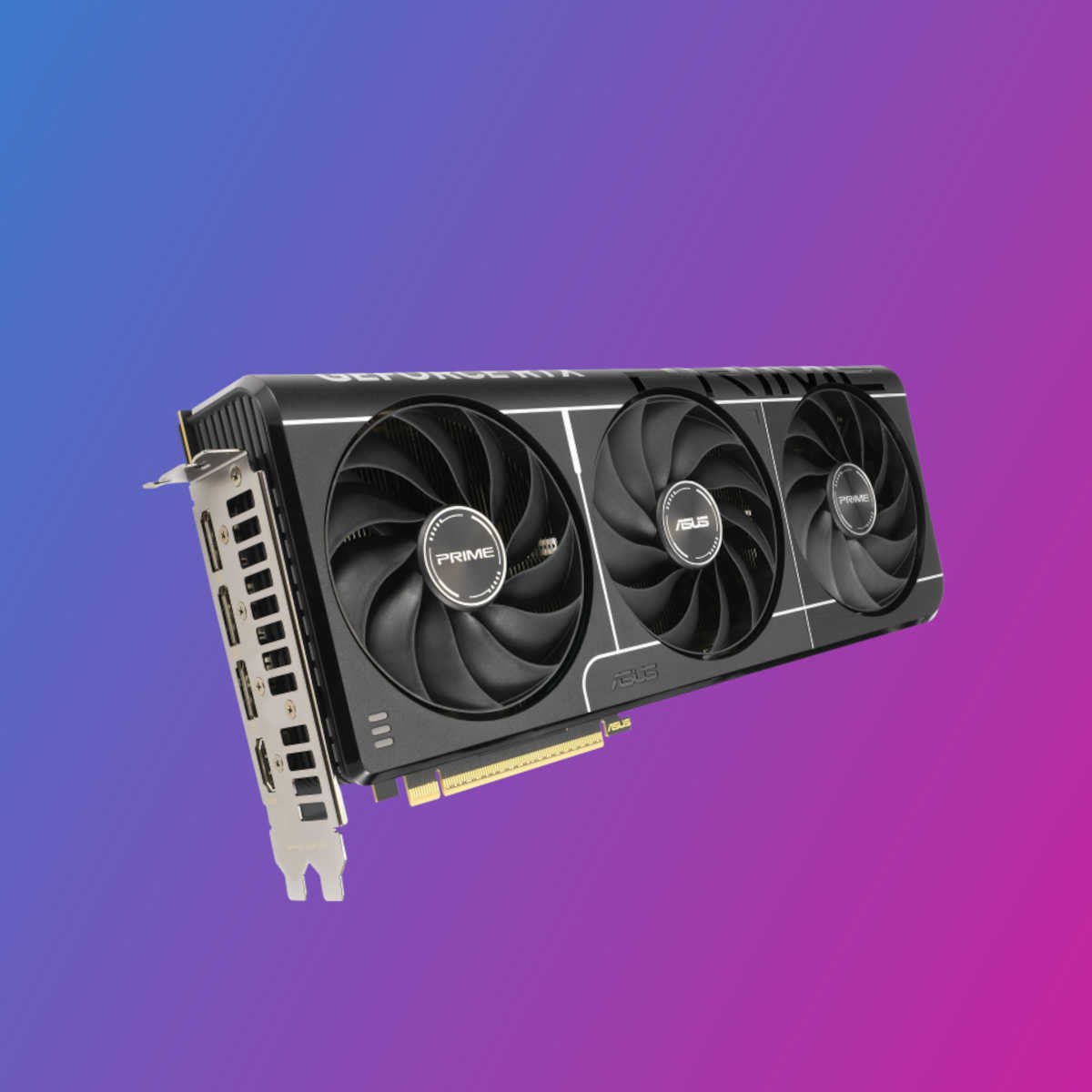
Asus GeForce RTX 5070 Ti OC SFF-ready
“Experience Primal performance with the Prime GeForce RTX 5070 Ti, an SFF-Ready Enthusiast GeForce Card featuring a 2.5-slot design for expansive compatibility, enhanced by a triple-fan setup for supreme airflow design for supreme cooling.”
Though our review team has not examined the Asus version of this card directly, performance figures from other RTX 5070 Ti cards are very relevant. The Asus model has a very minimalist look, unobtrusive with its black shell and subtle silver accents. The RTX 5070 Ti tends to run a bit hotter than its AMD rivals, topping out at 65°C. This is still a fairly cool temperature for a GPU under load, and well under the point where thermal throttling becomes a problem.
The RTX 5070 Ti sits at the top of the mid-range, and has the performance numbers to prove it, even in creative and productivity tasks. In Blender, for instance, it gets a score of 7,767. Scores in Geekbench AI are even more impressive, with the RTX 5070 Ti posting 53,115, beating the RTX 4080 Super, and only being out-performed by the RTX 5080 and RTX 5090.
Since this is a card that sits within touching distance of the high-end, you can of course expect stellar gaming performance. The RTX 5070 Ti is most comfortable at 1080p and 1440p resolutions, though it can stretch to 4K in some scenarios. In Assassin’s Creed: Mirage at QHD it manages an average framerate of 152fps, dropping to 97fps at 4K.
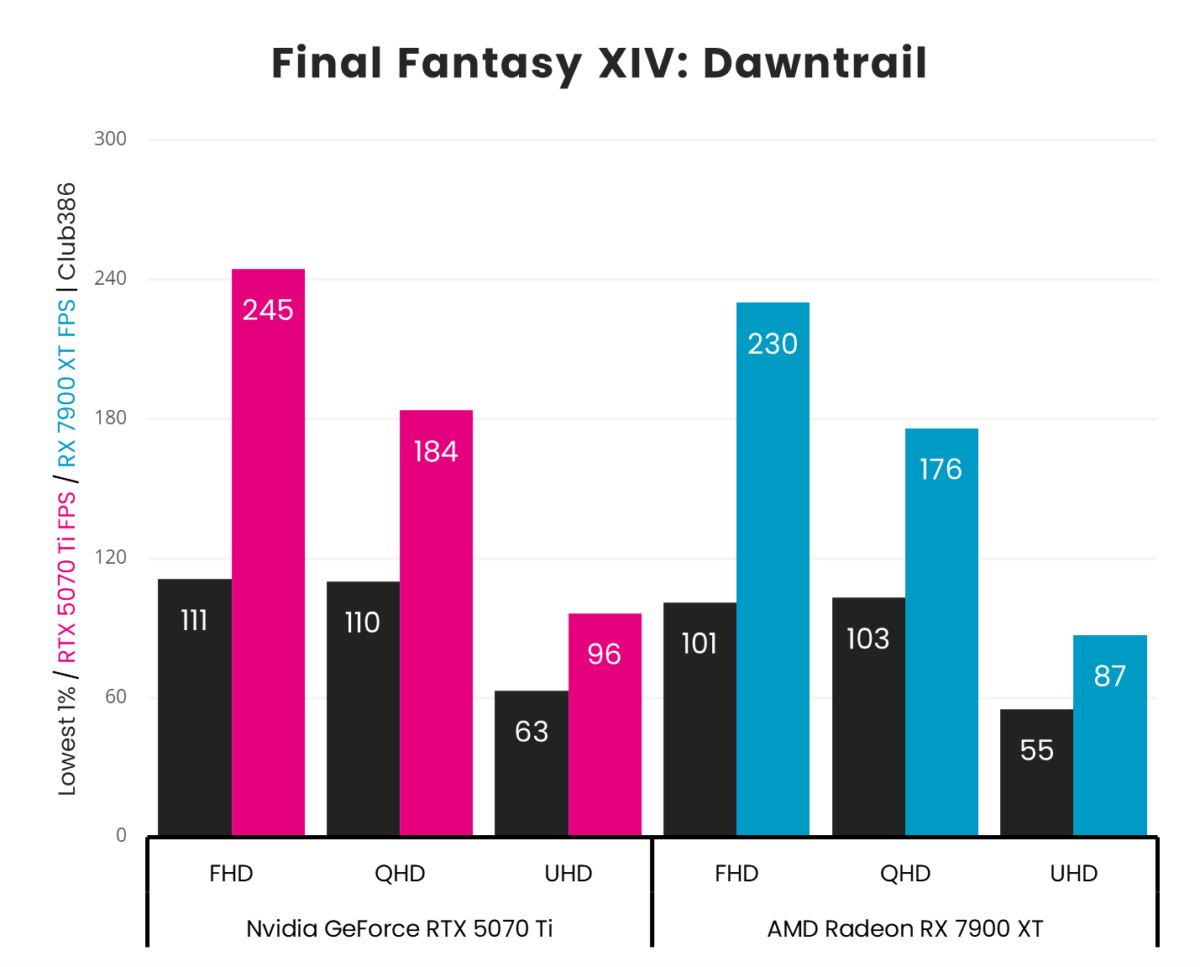
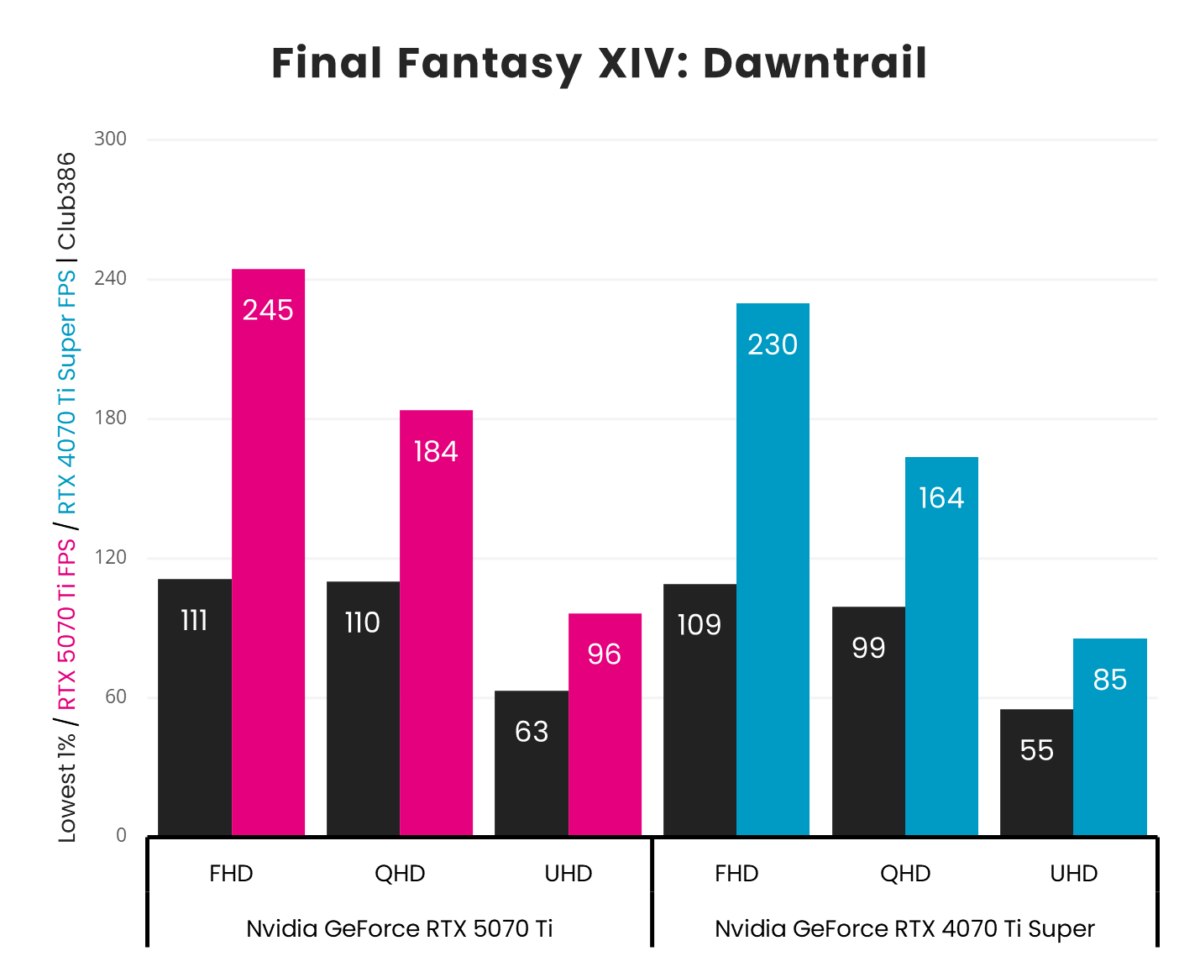
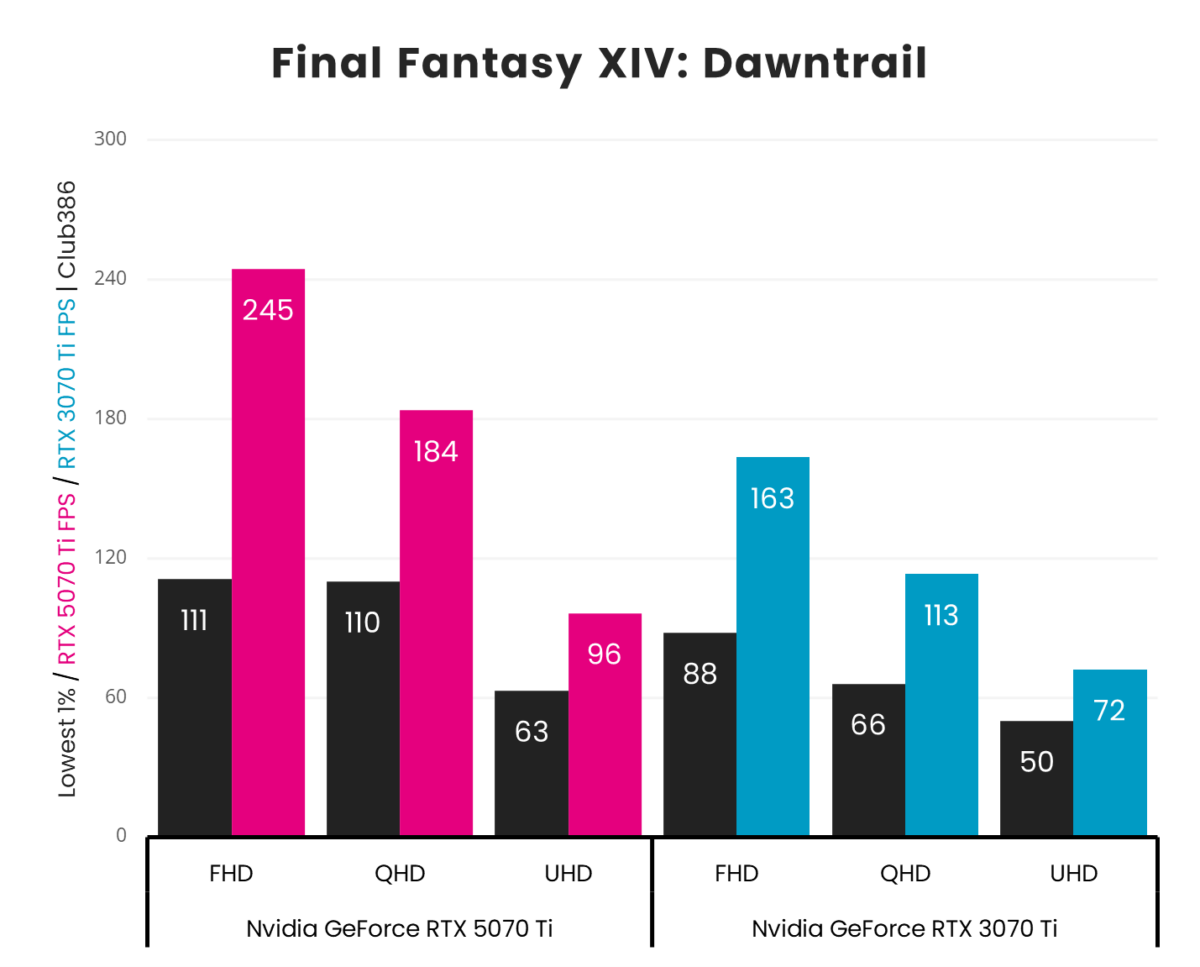
MMO players will have reasons to be pleased with this card, too. It can easily handle the updated graphics in Final Fantasy XIV: Dawntrail, delivering a huge 245fps at 1080p, 184 at 1440p and a respectable 96fps at 2160p.
With a 14 percent discount dropping the price of this card down to $808.99, the Asus GeForce RTX 5070 Ti is a powerhouse fit to grace any small form factor build. For those in the UK, the price cut is even bigger, with a 32 percent reduction, bringing the cost down to £726.99.
MSI Gaming RTX 5070 12G Ventus 3X OC
The name is bit of a mouthful, but it is tough to complain about that when there is 21 percent off the list price, dropping this mid-range card down to an affordable £479/$549. The RTX 5070 is not the biggest and best card out there, though it does offer 12GB of VRAM and some decent performance figures to boot.
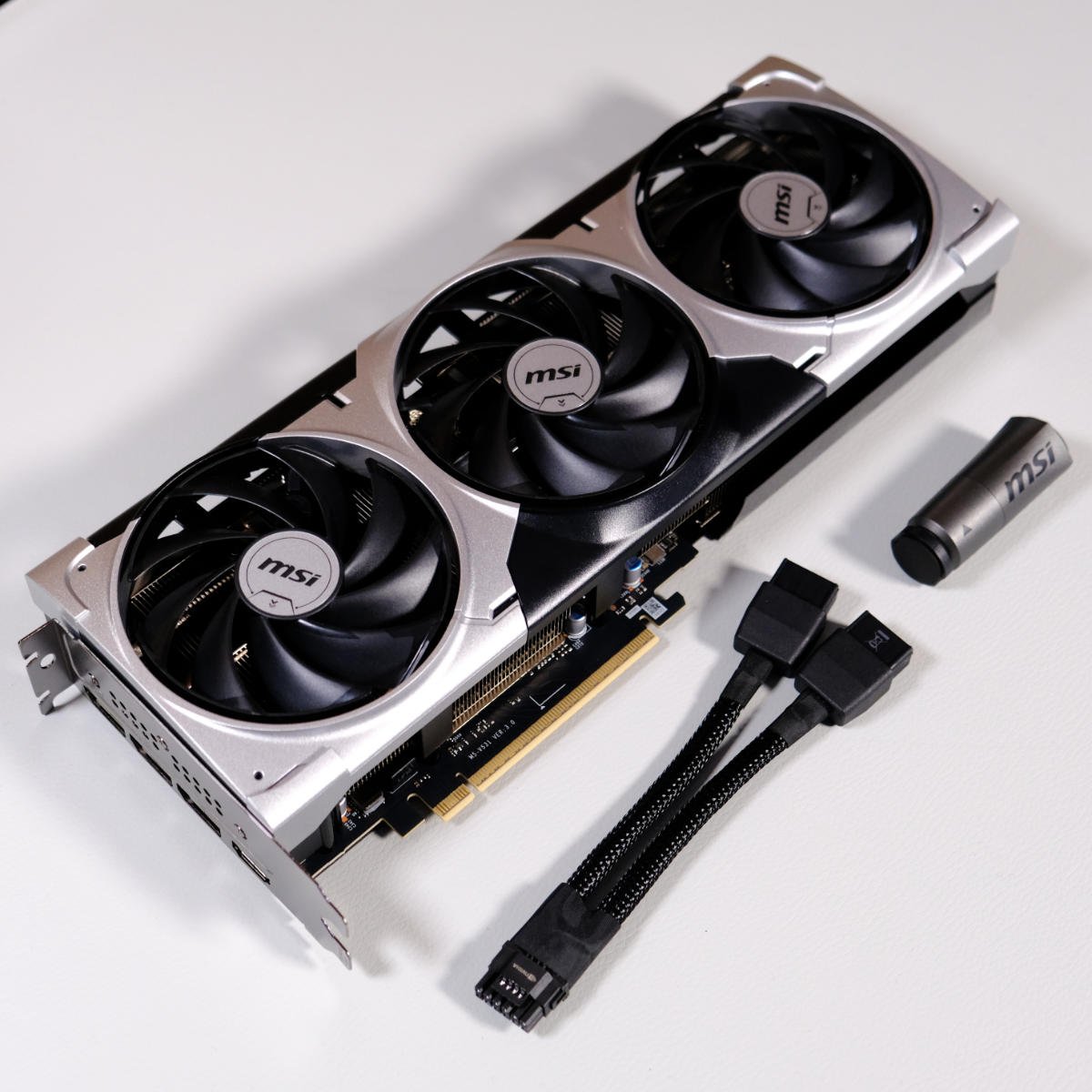
MSI Gaming RTX 5070 12G Ventus 3X OC
“Most of Blackwell’s strength doesn’t come from rasterisation, but instead its Frame Generation feature set.” Read our Founders Edition review.
Where the RTX 5070 wins out against slightly cheaper models like the RTX 5060 is in VRAM capacity. The difference between 8GB and 12GB doesn’t seem that huge on paper, but it can make an astonishing difference to the performance. Many modern AAA games have highly detailed graphical textures that can quickly exceed the small 8GB VRAM buffer, causing lag, stutter and other performance drops, especially when run at higher resolutions.
The higher VRAM isn’t the only trick up the RTX 5070’s sleeve. As part of the Blackwell series, it has access to all the latest Nvidia software tools. These include DLSS 4, which enables it to deliver AI-powered upscaling, ray tracing and frame generation. Although not universally popular, frame generation technology bridges the gap for users on mid-range PCs, allowing for smooth framerates that wouldn’t be possible using only the native hardware.
To use one example, in Call of Duty: Black Ops 6 at 1440p, RTX 5070 delivers an average framerate of 106fps natively. This is not to be sniffed at, of course, but if DLSS upscaling and frame generation is added to the mix, this figure jumps up to 161fps. The famously demanding Cyberpunk 2077 produces starker results. At 1440p, native framerate is a mere 25fps. Turn on all the DLSS bells and whistles, including upscaling and 4X Multi Frame Generation, and the average framerate balloons to 151fps.
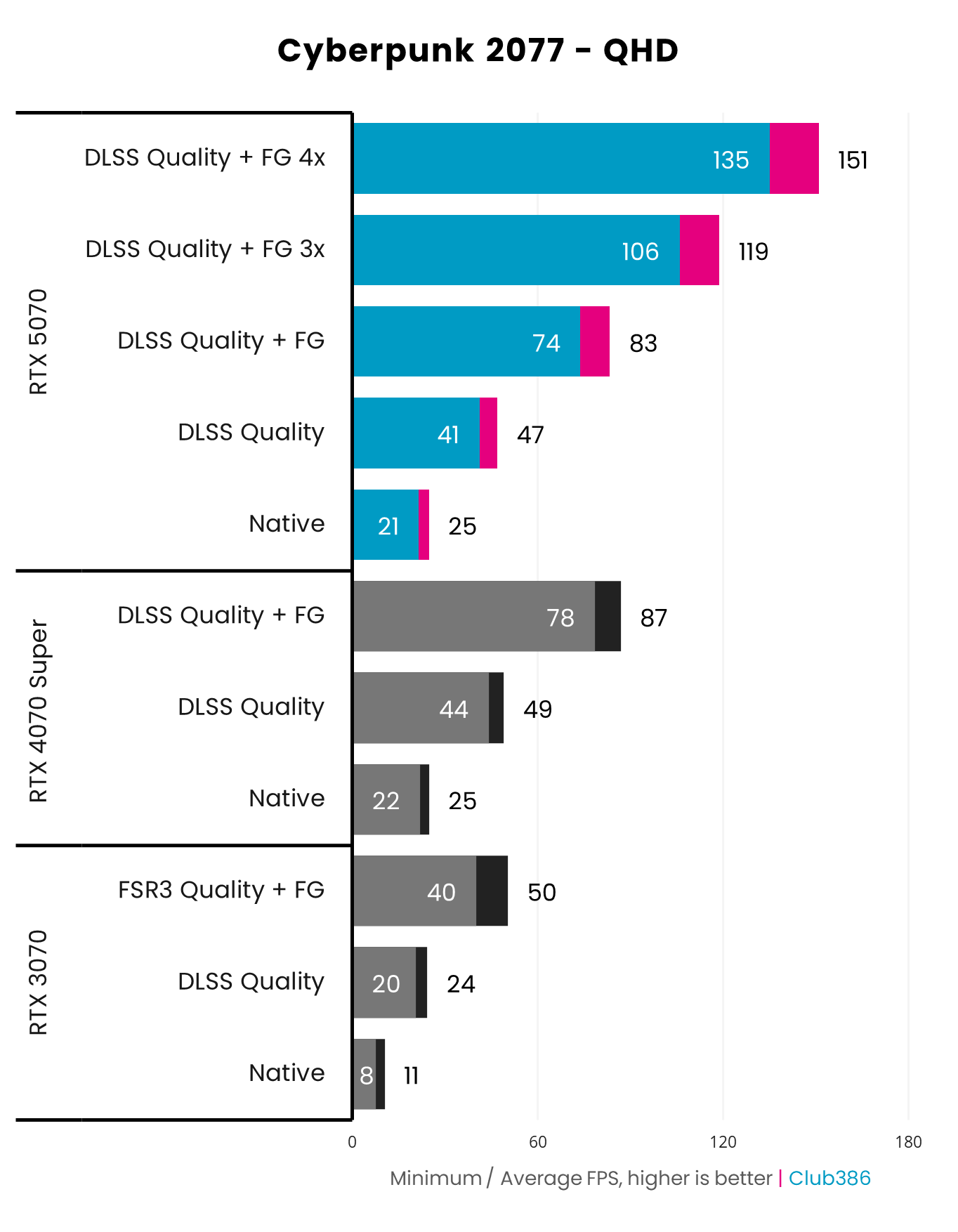
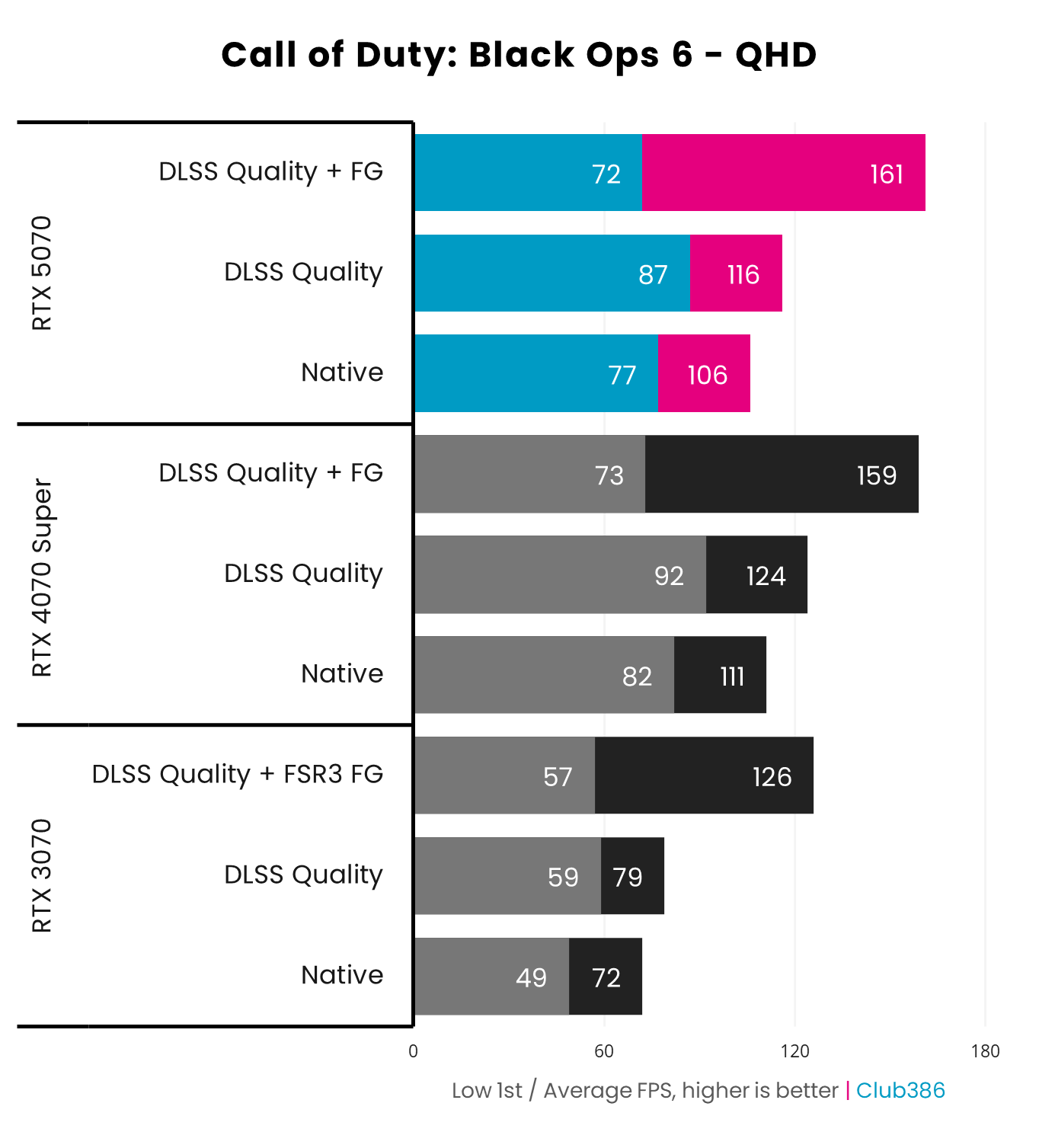
MSI GeForce RTX 5060 8G Inspire 2X OC
Sometimes PC components fail. Your beloved RTX 2070 just kicked the bucket after many years of loyal service. Once you dry your tears and give it a warrior’s funeral, you will of course need to look for a new graphics card. Unfortunately, you and your budget were not prepared to do such a big spend this month. When you are faced with this situation, you basically want the best you can get for a bargain-bin price. Enter the MSI GeForce RTX 5060 8G Inspire. Its already fairly reasonable price has dropped even lower to a mere £229/$329, making it a great choice for those on a limited budget.
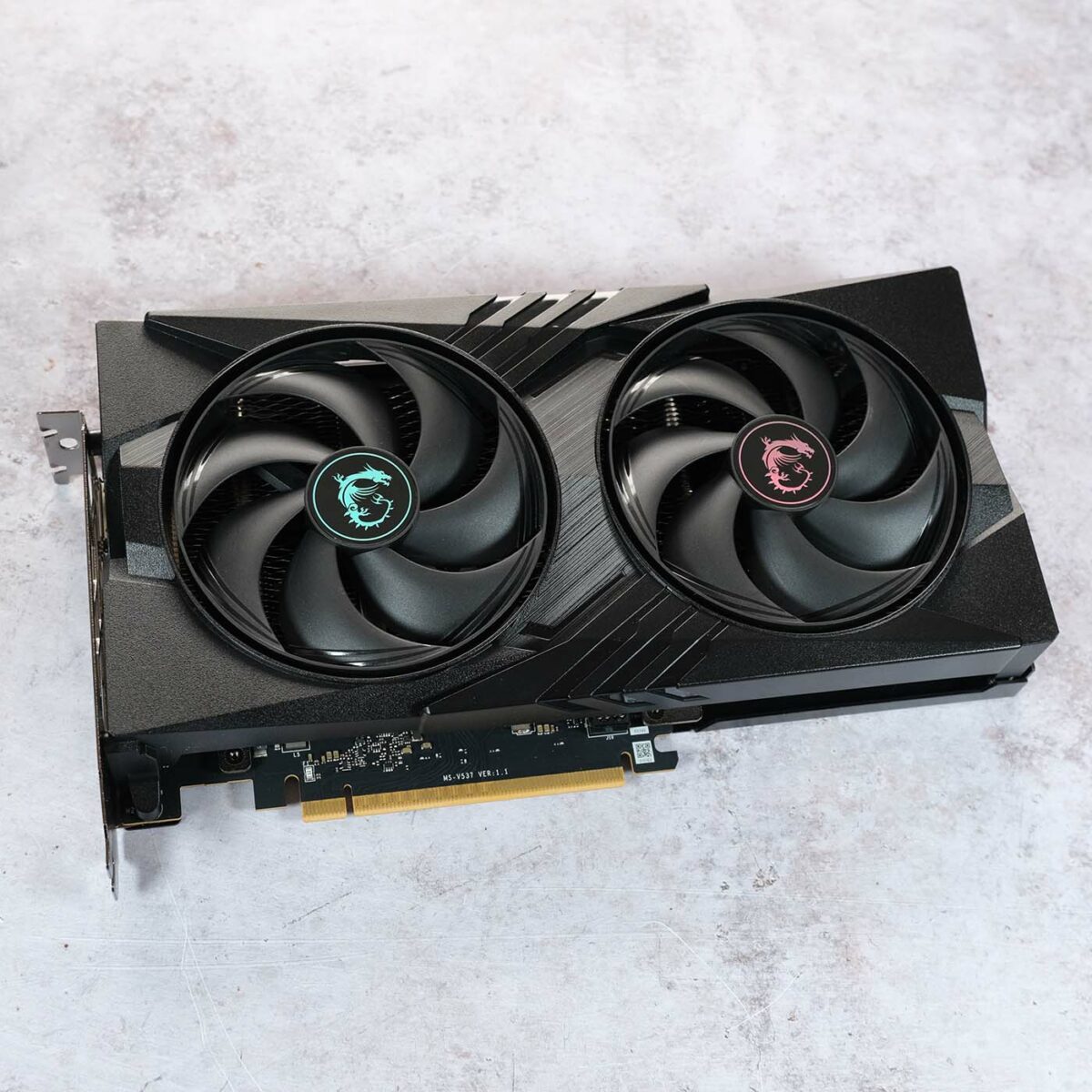
MSI GeForce RTX 5060 8G Inspire 2X OC
“I like a lot of what this graphics card offers, particularly how much of a performance improvement it is over RTX 4060. Still, it’s difficult to shake the concerns I have over VRAM capacity.” Read our review.
Nvidia graphics cards with the -60 suffix have long been a favourite choice amongst PC gaming fans, mainly because this tier of cards offers access to all the latest Nvidia software and the ability to play new AAA games at an affordable price. The RTX 5060 is also a very power-efficient card, with a TGP of 145W, so even a fairly low-end power supply – 500W or so – will handle it without a problem. The small size and low heat output means it is a solid choice for a small form-factor SFF build.
For this fairly modest price, PC gamers can expect a great experience at 1080p. Assassin’s Creed: Mirage, for example, manages an average framerate of 119fps at this resolution. Mount & Blade II: Bannerlord likewise pulls in 194fps at 1080p resolution. There is a sting in the tail, however. The 8GB VRAM buffer shows its limitations in more demanding titles. In Forza Motorsport, for instance, the RTX 5060 can only pull off a feeble 29fps at 1080p, but that’s because we run it with ray tracing turned on and all other quality presets to maximum.
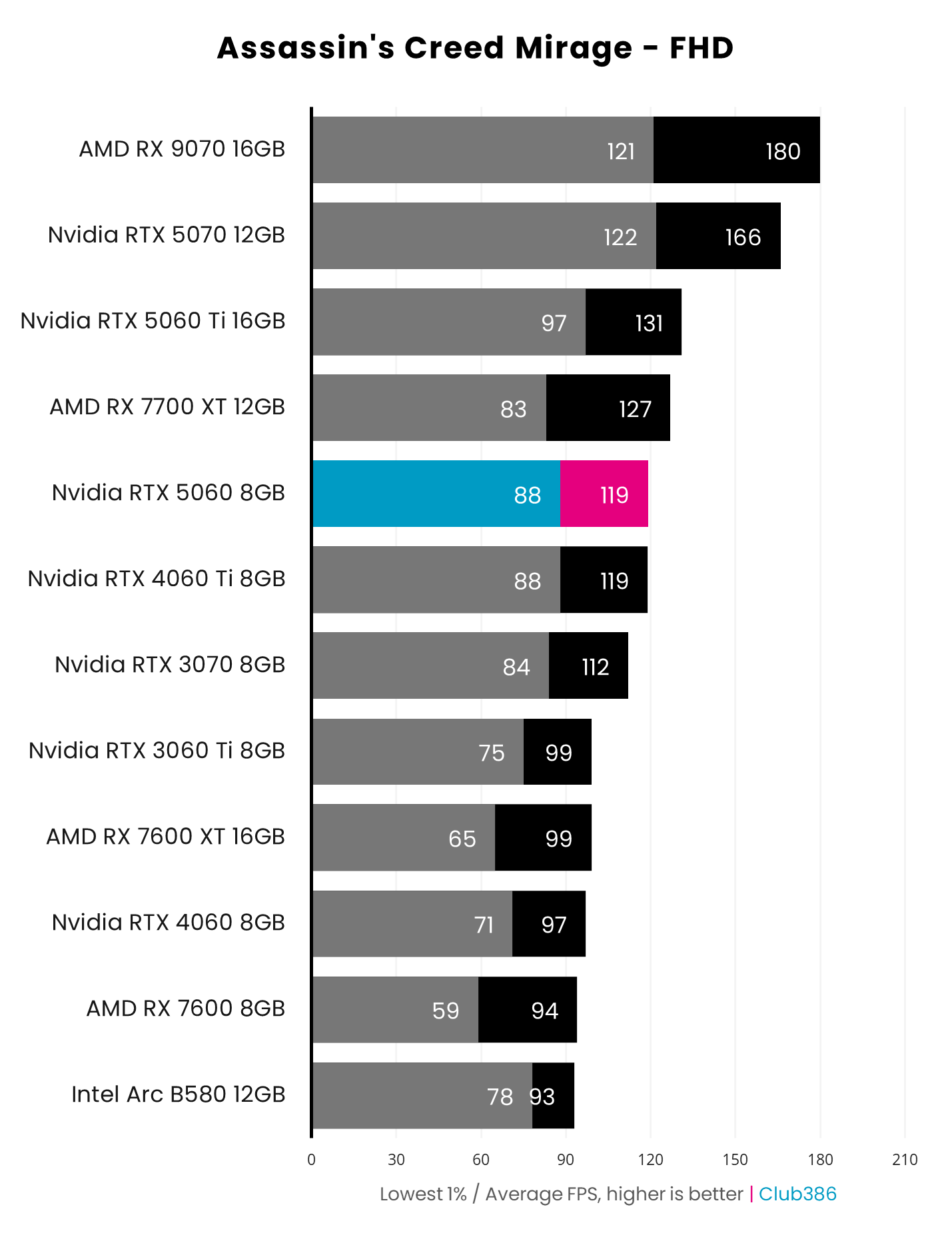
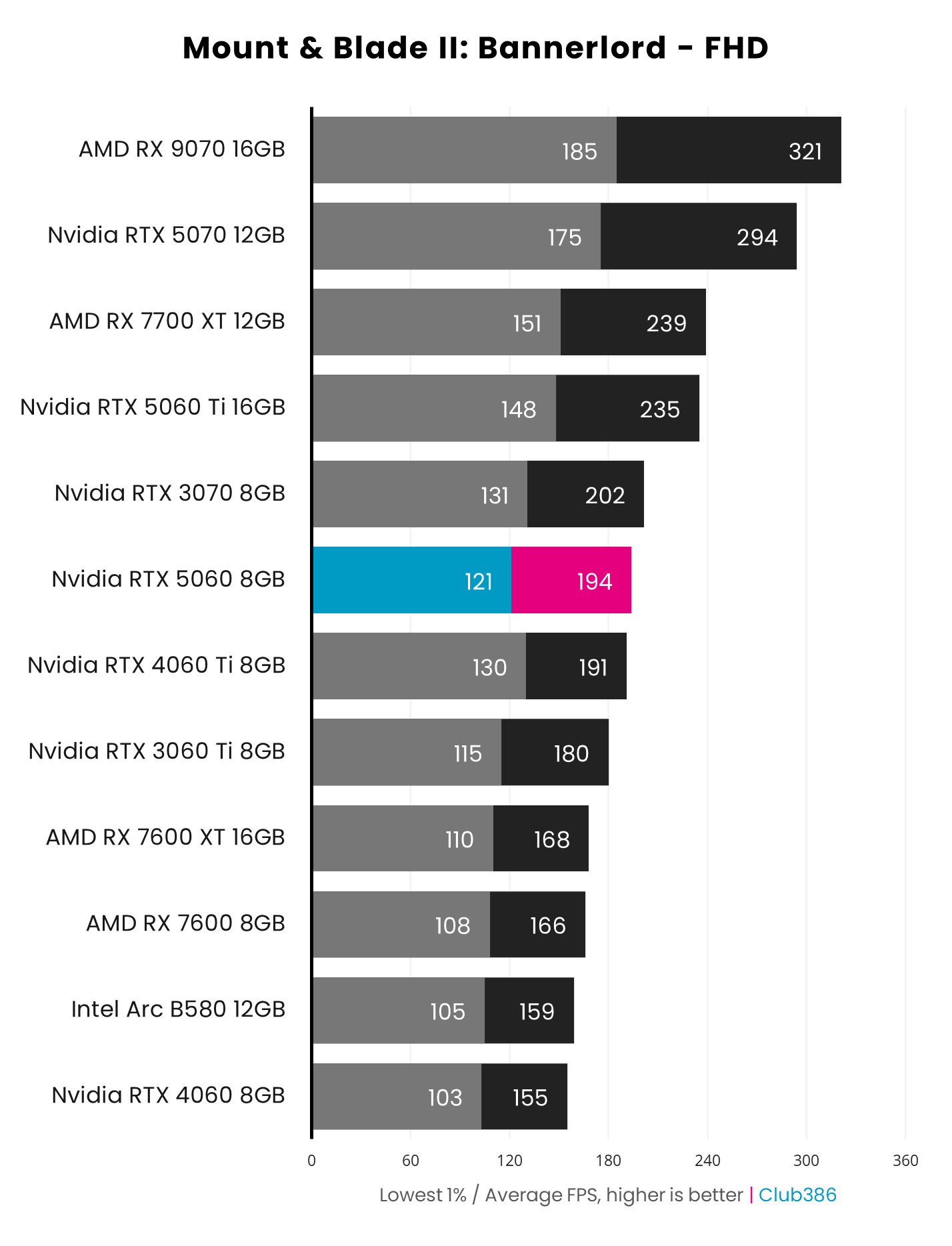
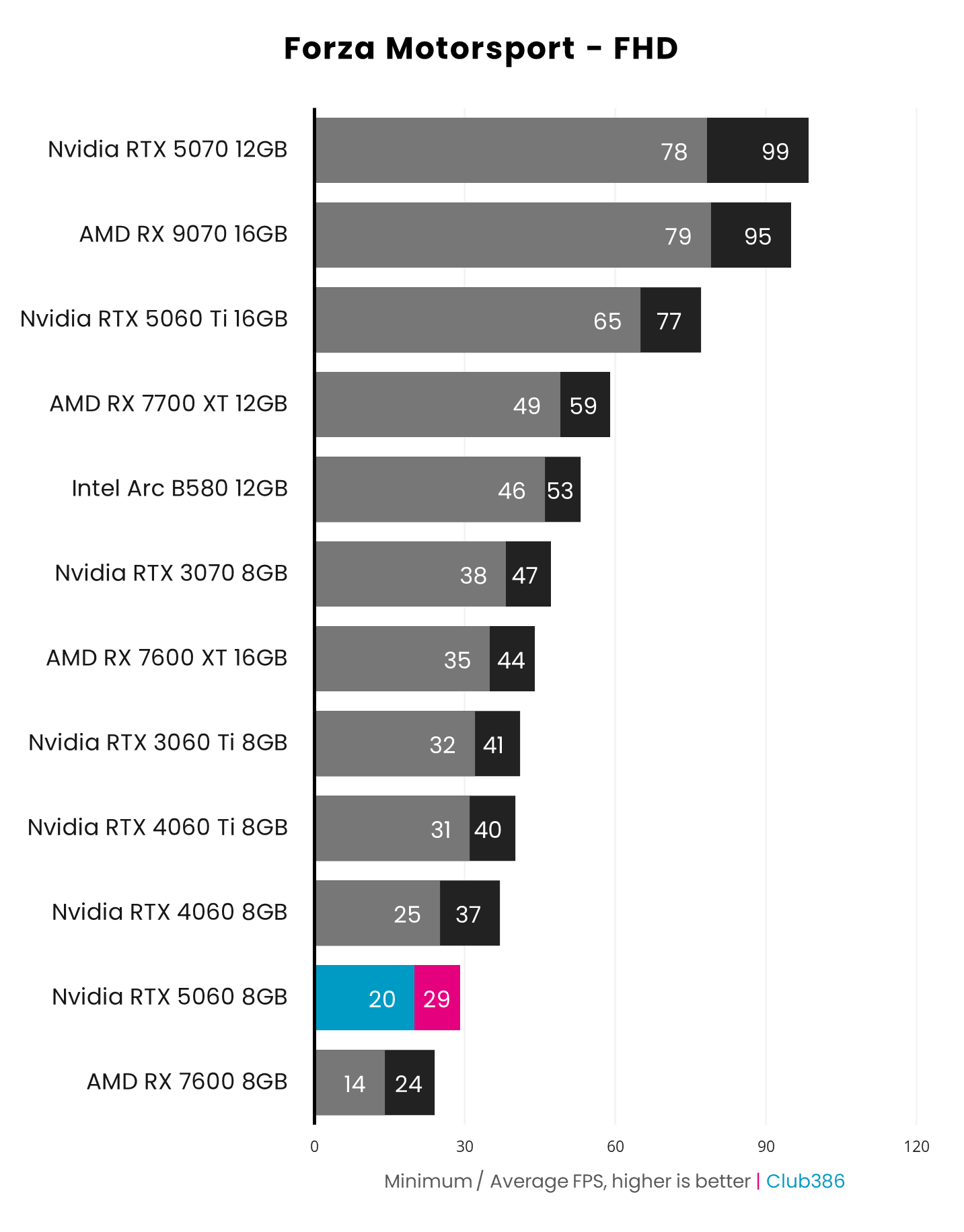
It is when running these more demanding games that Nvidia’s DLSS technology comes into play. The difference in framerate is remarkable when DLSS Quality and Frame Generation are activated. In Call of Duty: Black Ops 6, the RTX 5060 manages 95fps natively at 1080p, but with DLSS 4 bells and whistles, this goes up to a massive 149fps. Cyberpunk 2077 is notoriously hard on graphics cards, but some fiddling with DLSS settings can at least get you a playable 44fps at 1080p.
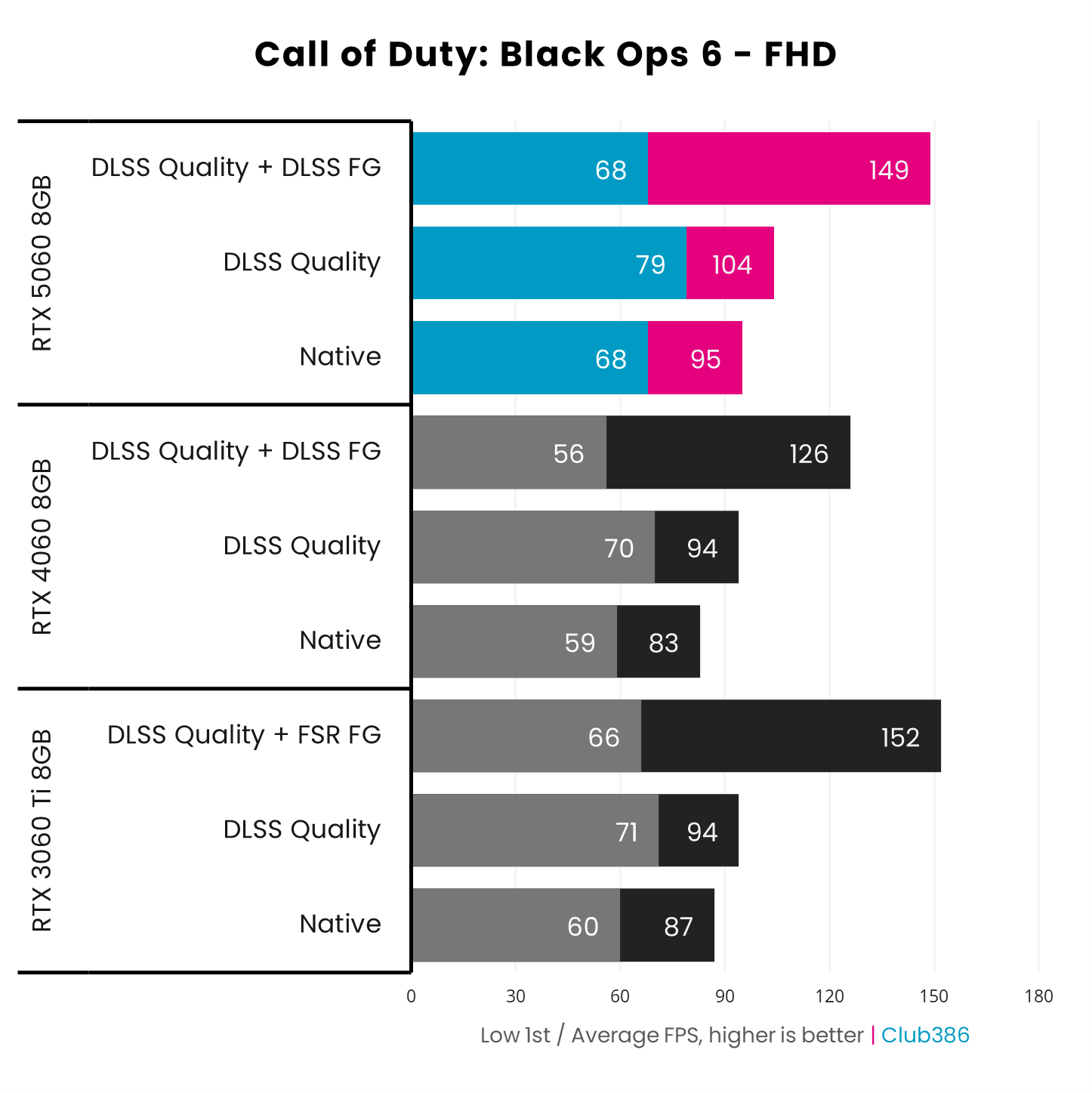
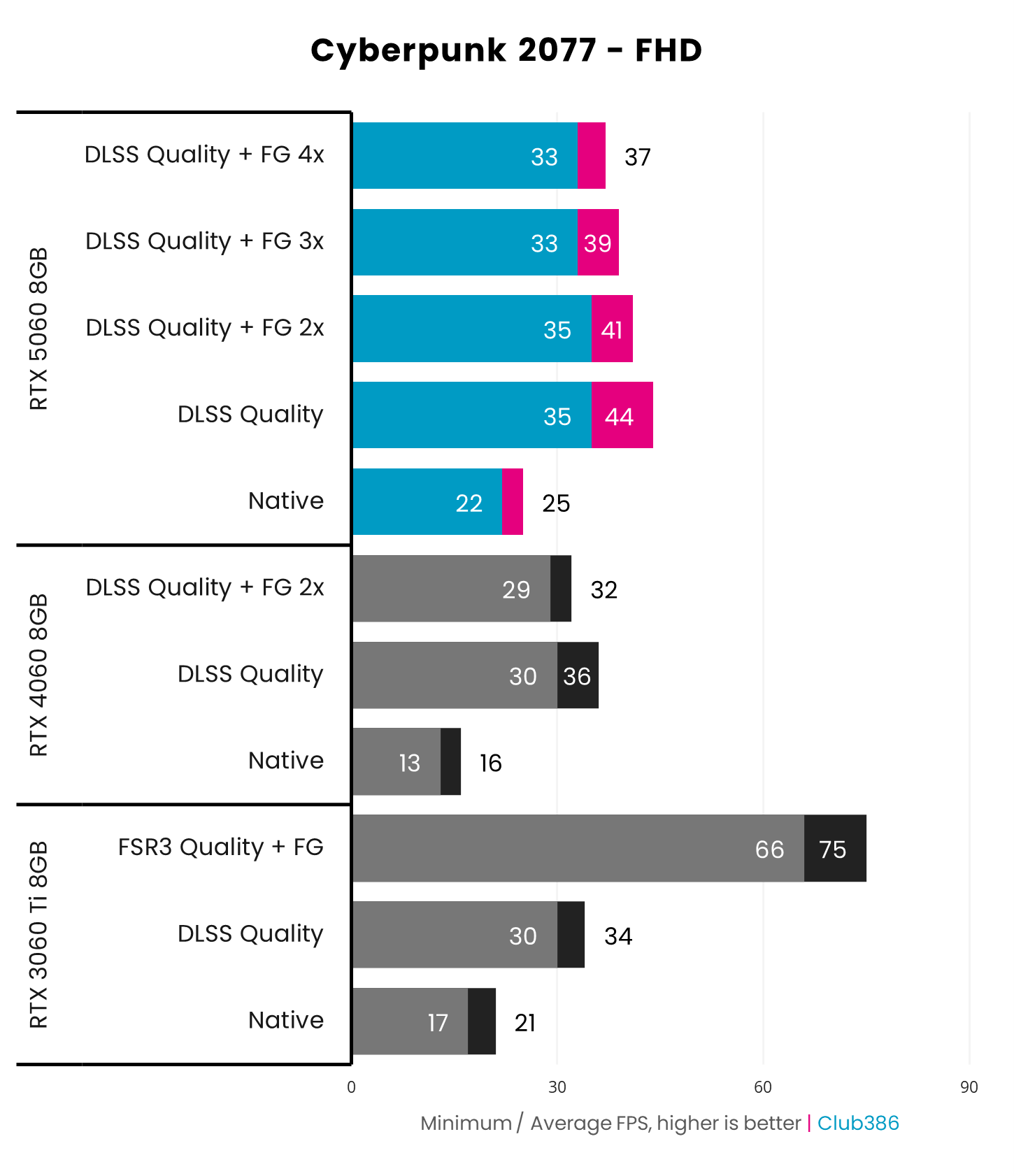
The RTX 5060 does have its limitations compared to cards with 12GB or 16GB VRAM buffers, but it still serves as a decent budget option. For those who are working on a budget build yet still want access to Nvidia’s DLSS 4 suite, it makes a for a decent buy. Especially with the current Prime Day discount.


